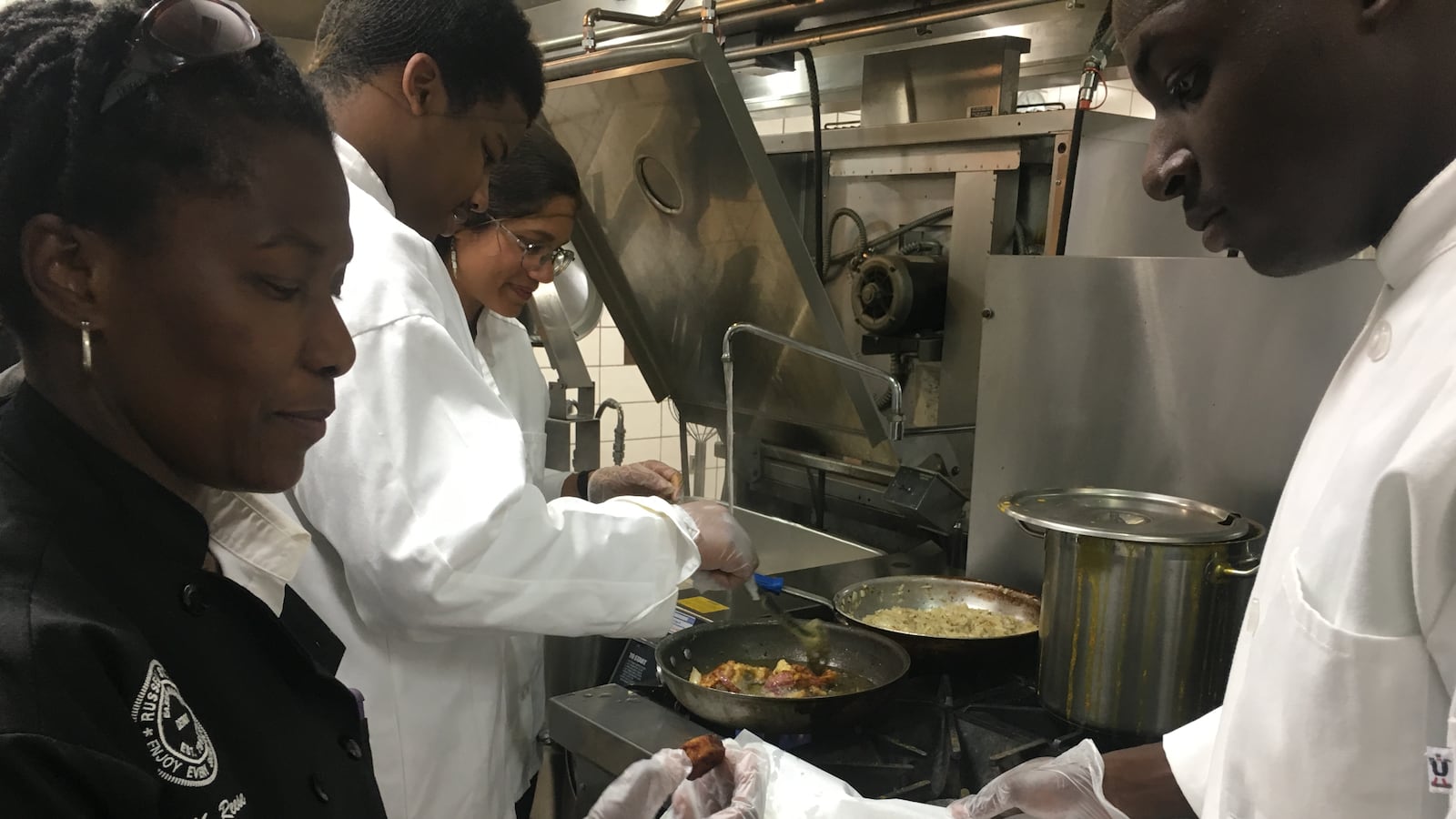How do teachers captivate their students? Welcome to How I Teach, a feature in which we ask great Detroit educators how they approach their jobs. Have a recommendation of someone we should profile? Write us at detroit.tips@chalkbeat.org.
Marquita Reese defies a traditional job title. At the Frederick Douglass Academy for Young Men, an all-boys high school on Detroit’s east side, where she has taught for more than two decades, she is a chef, a gardener, and a meditation leader. Oh, and she teaches math.
Reese headed up an effort to build a greenhouse at Douglass, funded with federal grant dollars. Vegetables grown on the campus are used in cafeterias across Detroit’s main district. When it started in 2016, the program was lauded by Sen. Debbie Stabenow for simultaneously feeding children and teaching about science and nutrition.
Reese spoke with Chalkbeat about the garden, being a woman in the hard sciences, and welcoming parents into her classroom.
Was there a moment when you decided to become a teacher?
I graduated from Wilberforce University [in Ohio] with a degree in clinical psychology, but being a psychologist didn’t work out. Wanting to maintain a strong math and science grasp, I enrolled in the school of education at Wayne State, majoring in mathematics and sciences.
I said I’ll do math and science, not really considering that those are two of the most challenging areas of study.
I didn’t realize in retrospect that I was one of the few or only females that had a math and science background in the district. I would go into some meetings and would be one of the only females.
How do you get to know your students?
Students are given a survey and are required to write a short paper about themselves. They must speak to their expectations and provide some insight about their goals for the present and for five years from now. This year I included a three-minute meditation in the morning every day. Doing that at the beginning kind of relaxes the setting, and starts to build that trust between you and your students.
You run a greenhouse and garden on the grounds of Douglass Academy, and you also teach lessons about cooking. Tell us about a favorite lesson to teach your students about the garden. Where did the idea come from?
An activity I do before my students set foot in the garden is called colors of the rainbow. You take the colors of the rainbow, but you extend it, so I do teal, tan, indigo. For each color, they have to provide a fruit or vegetable that can be grown in Michigan and they have research their nutritional benefits.
In what region of Michigan can it be grown? When can it be grown, and at what temperature? They present it to the class, and they also have to do a PowerPoint. Then we we go for seed selections or transplants, they understand that some plants can’t be put in the ground at certain times. One year, we actually discovered that we can grow oranges in Michigan.
What’s something happening in the community that affects what goes on inside your class?
One of the things I felt very passionately about this year was changing the narrative society is putting out, especially looking at melanated young men. I was worried about these young men, their self worth, their self esteem, so I just opened up to them, told them how I’m feeling, and they expressed their views.
It was an emotional time for us all. Being melanated people, we don’t have a good idea of where our ancestors are from, so some of our dialogue is about that. We talk about what we don’t know and what we do know about African cultures.
Tell us about a memorable time — good or bad — when contact with a student’s family changed your perspective or approach.
Myself and an English teacher put together a parent group and a student group with all the parents’ email addresses. We’d send a message each time something happened in the classroom, homework or anything else, to the parents and the students.
Then I started getting notes from parents. They said ‘Hey, can we do this too?’
They’d text me like, ‘Hey, I don’t get this.’ I was like, ‘Yeah, you can come in and take notes, try to figure it out.’
It became an open door.
It was the SAT year, so they knew the importance of the child understanding the material. They never said, ‘It’s because I want to learn.’ They wanted to make sure that when their child came to them, they understood how to help their child.
What was your biggest misconception that you initially brought to teaching?
I thought that the students and families that entrusted their kids to me had the same ideologies, learning style, and background as myself. For some, their exposure and educational experience or support was nothing like mine, so I had to refocus and adjust my teaching style and methods.
What’s the best advice you’ve received about teaching?
To be hard, consistent, and fair. As the students learn something new, so should I every day.


